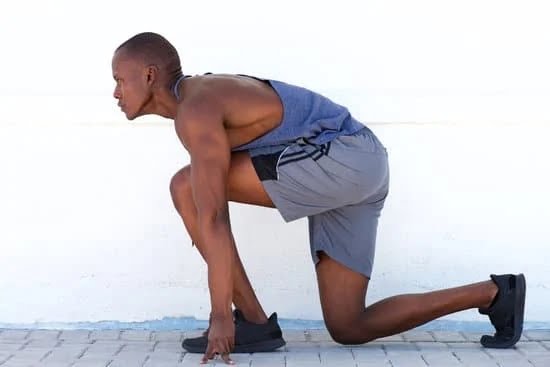Biking is not only a fun outdoor activity, but it also brings a multitude of health and fitness benefits. In this article, we will delve into the hidden advantages of biking that go beyond just being a means of transportation or leisure hobby. Whether you are an avid cyclist or have yet to hop on a bike, the power of biking in improving overall health and fitness is often underestimated.
One of the remarkable aspects of biking is its versatility for people of all ages and fitness levels. It is a fantastic exercise option that can be tailored to suit individual needs and goals. From children riding their bikes around the neighborhood to seniors enjoying leisurely rides, biking offers physical benefits for everyone.
Beyond the obvious cardiovascular workout, biking targets major muscle groups in the body, making it an effective way to build strength and endurance. It particularly strengthens leg muscles such as quadriceps, hamstrings, and calves. Additionally, regular biking can improve joint flexibility and stability while promoting bone density.
In terms of cardiovascular health, biking proves to be an excellent method for promoting heart health and preventing heart-related diseases. The aerobic nature of cycling increases one’s heart rate and improves circulation throughout the body. Furthermore, regular biking helps lower blood pressure levels and reduce cholesterol buildup in arteries.
As we explore the numerous reasons why biking should be part of your fitness routine, we will unveil how this activity aids in weight loss by burning calories efficiently. Comparatively speaking, biking burns more calories than many other forms of exercise. We will discuss how incorporating interval training and varying intensity levels during rides can maximize fat loss.
Overall, from transforming your physique to boosting mental well-being, enhancing endurance to improving balance and coordination – the health and fitness benefits associated with biking extend far beyond what meets the eye. So whether you are a seasoned cyclist or contemplating starting your cycling journey, discover how incorporating biking into your life can enhance your overall well-being.
Muscle Strengthening
Biking is not only a great cardiovascular exercise, but it also offers several benefits for muscle strengthening. Regular biking targets and strengthens major muscle groups in the body, making it an effective workout for building a stronger physique. Whether you are cycling outdoors or using a stationary bike, biking engages various muscles in the lower body.
Targeted Muscle Groups
One of the primary muscle groups that benefit from biking is the quadriceps. The quadriceps are located on the front of your thighs and play a crucial role in extending and flexing your leg. As you pedal, the quadriceps contract to push down on the pedals, providing power to propel yourself forward.
In addition to the quadriceps, biking also targets other muscles in the lower body such as the hamstrings, calves, and glutes. The hamstrings, located on the back of your thighs, work to bend your knee during each pedal stroke. The calf muscles provide stability and help with pushing through each rotation while biking. Lastly, the glutes help stabilize the hips as you move your legs.
Different Terrains and Muscle Development
The terrain you choose for biking can further enhance its muscle-strengthening benefits. For instance, mountain biking involves navigating through rough terrains with steep inclines and descents. This type of biking activates additional muscles in your core and upper body as they work to maintain balance and control over uneven surfaces.
On-road biking primarily strengthens muscles in the lower body due to smooth surfaces. However, incorporating resistance or increasing intensity levels during on-road rides can still provide a challenging workout for your muscles.
To maximize muscle development with biking, consider incorporating interval training into your routine. This involves alternating between periods of high-intensity effort followed by recovery periods at a lower intensity. It challenges different muscle fibers and helps build both endurance and strength.
Cardiovascular Health
Regular biking is not only a fun and enjoyable activity but also a great way to improve cardiovascular health and prevent heart-related diseases. Cycling has been proven to have numerous benefits for the heart, making it an ideal exercise option for individuals of all ages and fitness levels.
One of the key benefits of biking for cardiovascular health is its ability to provide aerobic exercise. As a form of cardiorespiratory activity, biking increases your heart rate, promoting better circulation and oxygen delivery to your muscles. This helps strengthen the heart muscle itself, leading to improved overall cardiac function.
In addition to strengthening the heart, regular biking can also help lower blood pressure. High blood pressure is a major risk factor for heart disease, stroke, and other cardiovascular conditions. By engaging in regular biking sessions, you can reduce your blood pressure levels and enhance your heart’s efficiency in pumping blood throughout your body.
Furthermore, cycling promotes improved circulation throughout the body. The rhythmic pedaling motion increases blood flow to various organs and tissues, providing them with fresh oxygen and nutrients while removing waste products. This improved circulation contributes to better overall cardiovascular health by reducing the risk of blood clots and improving overall vascular function.
When it comes to reaping the cardiovascular benefits of biking, consistency is key. Aim for at least 30 minutes of moderate-intensity cycling on most days of the week. You can gradually increase the intensity or duration of your rides as your fitness level improves. Remember to consult with your healthcare provider before starting any new exercise program, especially if you have existing cardiovascular conditions or risk factors.
Biking provides an enjoyable and effective way to boost your cardiovascular health while enjoying the great outdoors at the same time. Whether you prefer leisurely rides through scenic routes or intense mountain biking adventures, pedaling your way to a strong heart will benefit both your physical well-being and overall quality of life.
Weight Loss and Calorie Burning
Regular physical activity is essential for weight loss and maintaining a healthy body weight. Biking is a fantastic exercise option that can help individuals shed excess pounds and achieve their weight loss goals. Here are some key points to consider about the role of biking in weight loss and calorie burning:
- Caloric Expenditure: Cycling is a great way to burn calories and create a caloric deficit, which is necessary for weight loss. The number of calories burned through biking depends on various factors such as intensity, duration, and individual characteristics like weight and metabolism. On average, a person weighing around 155 pounds can burn approximately 300-600 calories per hour of moderate-intensity biking.
- Fat Burning: Engaging in aerobic exercises like biking can effectively target fat stores in the body. During prolonged periods of aerobic exercise, the body relies more on fat as an energy source rather than carbohydrates. This means that regular biking can help individuals not only lose overall body weight but also reduce stubborn belly fat.
- Interval Training: To maximize fat burning during biking sessions, incorporating interval training can be highly effective. By alternating between short bursts of high-intensity pedaling with periods of lower intensity or rest, interval training helps increase calorie burn both during and after the workout. This type of training also helps boost metabolism and improve cardiovascular fitness.
To make the most out of biking for weight loss, it’s important to incorporate other healthy lifestyle habits such as a balanced diet and strength training exercises for overall muscle development. Additionally, varying the terrain and incorporating hills or inclines into your bike rides can increase resistance and further enhance calorie burn.
- Caloric Expenditure: Biking can help burn approximately 300-600 calories per hour for an individual weighing around 155 pounds.
- Fat Burning: Regular biking can target fat stores in the body and aid in reducing stubborn belly fat.
- Interval Training: Incorporating high-intensity intervals into biking sessions can increase calorie burn and boost metabolism.
Joint Health and Low Impact Exercise
Reducing Joint Stress with Biking
One of the significant benefits of biking is that it offers a low-impact workout, making it gentle on the joints. Unlike high-impact exercises like running or jumping, biking reduces stress on the joints, making it an ideal exercise for individuals with joint issues or arthritis.
The smooth and fluid motions of pedaling on a bike help to minimize the impact on the knees, hips, and ankles, making it a suitable option for those seeking to protect their joint health while still engaging in physical activity.
Biking for Joint Health
Regular biking can have several positive effects on maintaining and improving joint health. It helps to strengthen the muscles around the joints which provide support and stability. By promoting muscle strength and flexibility, biking can help alleviate stress on the joints themselves. Additionally, biking assists in lubricating the joints by increasing blood flow and circulation throughout the body.
People with existing joint conditions can benefit from incorporating biking into their fitness routine. However, it’s essential to start slowly and gradually increase intensity and duration over time. It is also advisable to consult with a healthcare professional or physical therapist before beginning any new exercise regimen to ensure that biking is safe for your specific circumstances.
Tips for Joint-Friendly Biking
To make sure you are getting the most out of your biking sessions while minimizing strain on your joints, there are a few key tips to follow:
1. Maintain proper bike fit: Ensure that your bike is adjusted correctly to support good posture and proper alignment while riding. This will help distribute your weight evenly across different muscle groups.
2. Use appropriate gear: Invest in a quality bike seat that provides adequate cushioning and support. Consider using padded gloves to reduce pressure placed on your wrists as you grip the handlebars.
3. Warm up before riding: Perform some dynamic stretches or light aerobic exercises before hopping on your bike to warm up your muscles and joints.
4. Gradually increase intensity: Start with shorter rides at a comfortable pace and gradually increase the duration and intensity of your biking sessions. This will allow your joints to adapt gradually without causing unnecessary strain.
Incorporating biking into your fitness routine can provide joint health benefits while allowing you to enjoy the numerous advantages of physical exercise. By following these tips and listening to your body, you can make biking a safe and enjoyable part of maintaining joint health and overall fitness.
Mental Health and Stress Reduction
Biking is not only beneficial for improving physical health but also has significant positive effects on mental health and stress reduction. Engaging in regular biking can have a profound impact on an individual’s psychological well-being, leading to enhanced mood, reduced stress levels, and improved overall mental wellness.
One of the key psychological benefits of biking is its ability to release endorphins, commonly known as “feel-good” chemicals. When we engage in aerobic activities like biking, our brain releases these endorphins, which act as natural painkillers and mood elevators. This release of endorphins can improve our mood, reduce feelings of anxiety and depression, and enhance our overall sense of well-being.
Biking also offers individuals the opportunity to be outdoors and connect with nature, which has been shown to have numerous mental health benefits. Spending time in nature while biking can help reduce stress levels and promote relaxation. Being surrounded by greenery and fresh air can have a calming effect on our mind and body, helping us feel more grounded and at peace.
In addition to releasing endorphins and providing a connection with nature, biking also allows individuals to experience the meditative benefits of exercise. When we engage in physical activity like biking, our focus shifts from the stressors of everyday life to the present moment. This mindfulness aspect of cycling can help individuals let go of ruminating thoughts or worries and experience a sense of clarity and calmness.
To fully reap the psychological benefits of biking, it is important to make it a consistent part of your routine. Whether it’s going for leisurely rides through scenic routes or incorporating biking into your daily commute, finding ways to regularly engage in this activity will contribute significantly to your mental well-being.
Increased Endurance and Stamina
Biking is not only a great exercise for cardiovascular health, but it also plays a significant role in increasing endurance and stamina. The repetitive motion of pedaling helps to strengthen the muscles in your legs, improving their power and endurance over time. This section will explore how biking enhances leg power, improves overall athletic performance, and even boosts lung capacity and oxygen utilization.
One of the key benefits of biking is its ability to improve endurance and stamina. As you engage in regular bike rides, your leg muscles are constantly working and adapting to the demands placed on them.
This consistent effort leads to increased leg strength and power, allowing you to pedal effortlessly for longer periods of time. Whether you’re cycling on flat surfaces or tackling challenging terrains, your legs become more efficient at using oxygen and energy, resulting in improved endurance.
In addition to building leg power, biking also enhances overall athletic performance. Many sports require strong leg muscles, whether it’s running, hiking, or playing soccer. By incorporating biking into your fitness routine, you can develop the necessary stamina and strength needed for these activities. The increased endurance gained from biking can help enhance performance in other sports by allowing you to sustain physical exertion for extended periods.
Another notable benefit of regular biking is its positive impact on lung capacity and oxygen utilization. Cycling requires controlled breathing patterns that increase lung capacity over time. As your lungs adapt to the demands of cycling, they become more efficient at taking in oxygen and delivering it to the muscles that need it most during exercise. This improved oxygen utilization not only supports better endurance but also contributes to overall cardiovascular health.
| Benefit | Description |
|---|---|
| Increased Endurance | Biking helps improve both leg power and endurance, allowing for longer and more efficient rides. |
| Enhanced Athletic Performance | Biking strengthens leg muscles, contributing to improved performance in other sports that require endurance and leg power. |
| Improved Lung Capacity and Oxygen Utilization | The controlled breathing patterns in biking promote better lung capacity and oxygen delivery to the muscles during exercise, supporting overall cardiovascular health. |
Balance and Coordination
Biking is not only a great exercise for improving cardiovascular health and building muscle strength, but it is also an excellent way to enhance balance and coordination. Whether you are a beginner or a seasoned cyclist, biking can provide numerous benefits for your motor skills.
Balance is a crucial aspect of biking as it requires the ability to maintain equilibrium while pedaling and navigating different terrains. Biking improves proprioception, which is the body’s awareness of its position in space. This increased proprioception helps develop better balance overall and can be particularly beneficial for older adults who may be at risk of falls due to age-related declines in balance and coordination.
In addition to balance, biking also enhances coordination skills. Coordinating movements between the pedals, handlebars, and brakes requires precise timing and synchronization. Regular biking can improve overall motor skills and coordination, making everyday activities that require fine motor control easier.
For individuals with neurological disorders such as Parkinson’s disease or multiple sclerosis, biking can be especially beneficial. These conditions often affect balance and coordination, but research has shown that regular cycling can help improve gait patterns, stability, and coordination in individuals with neurological impairments.
Overall, incorporating biking into your fitness routine can have significant benefits for enhancing your balance and coordination skills. Whether you are looking to improve motor skills for athletic performance or simply want to maintain an active lifestyle, hopping on a bike regularly can help you achieve these goals.
| Benefit | Description |
|---|---|
| Improved Balance | Biking helps develop better balance by requiring the body to maintain equilibrium while pedaling on different terrains. |
| Enhanced Coordination | Biking involves coordinating movements between the pedals, handlebars, and brakes, improving overall motor skills and coordination. |
| Beneficial for Neurological Disorders | Biking can help individuals with neurological disorders such as Parkinson’s disease or multiple sclerosis improve gait patterns, stability, and coordination. |
Safety Tips and Precautions
Biking is a fantastic exercise option that offers numerous health and fitness benefits. However, it’s important to prioritize safety while enjoying this activity. By following some essential safety tips and precautions, you can ensure a safe and enjoyable biking experience.
Firstly, it is crucial to wear the appropriate safety gear when biking. This includes a properly fitting helmet, which can greatly reduce the risk of head injuries in case of accidents. Additionally, wearing reflective clothing or using reflective accessories helps increase visibility, especially when cycling in low-light conditions.
Secondly, it’s important to be aware of your surroundings and follow traffic rules when biking on roads or trails. Always ride in the same direction as traffic and practice defensive cycling to anticipate potential hazards. Signal your intentions using hand signals to inform motorists and other cyclists of your movements.
Furthermore, regularly inspecting and maintaining your bike is essential for safe biking. Before heading out for a ride, check that your brakes are working properly, tires are inflated to the correct pressure, and all components are tightened securely.
In addition to these general safety tips, there are specific precautions you should consider depending on where you plan to bike. If you’ll be cycling on roads, choose routes with designated bike lanes or lower traffic volume whenever possible. On the other hand, if you’re planning to take on off-road trails or mountain biking, make sure you have the necessary skills and equipment for navigating challenging terrains.
By following these safety tips and taking necessary precautions while biking, you can minimize the risks associated with this activity while maximizing its health and fitness benefits. So get out there on your bike and enjoy all the advantages it has to offer.
Conclusion
In conclusion, biking is an incredibly beneficial exercise that offers numerous health and fitness benefits. From muscle strengthening to cardiovascular health, weight loss to joint health, mental well-being to endurance and stamina, biking truly has it all. It is a versatile form of exercise that can be enjoyed by people of all ages and fitness levels.
One of the key advantages of biking is its ability to target and strengthen major muscle groups in the body. Regular biking helps build a stronger physique by working the legs, hips, buttocks, and even the core muscles. Additionally, biking on different terrains can provide additional challenges and help develop specific muscle groups.
When it comes to cardiovascular health, biking is an excellent choice. It provides an aerobic workout that boosts heart health and lowers the risk of heart-related diseases. Biking regularly improves circulation, which aids in lowering blood pressure and reducing the risk of high cholesterol.
Furthermore, biking is also a fantastic exercise for weight loss and calorie burning. It helps burn a significant amount of calories compared to other exercises, making it an effective tool for shedding excess pounds. Incorporating interval training and varying intensity levels during biking sessions can maximize fat loss even further.
Biking offers benefits beyond physical fitness as well. It has positive effects on mental well-being by releasing endorphins and enhancing mood. The connection between physical activity, such as biking, and mental health cannot be understated.
In conclusion, incorporating biking into your fitness routine can have lifelong benefits for your overall health and fitness. Whether you are looking to gain muscle strength, improve cardiovascular health, lose weight, enhance joint mobility, boost endurance and stamina or enhance motor skills like balance and coordination – biking has got you covered. So get on your bike today and start pedaling your way towards optimal health and fitness.

Passionate about providing useful information to anyone with an interest in the field of Personal Training, I strive to pass on to our readers quality information and to answer any questions about Personal Trainers, the work they do and how to become one.





